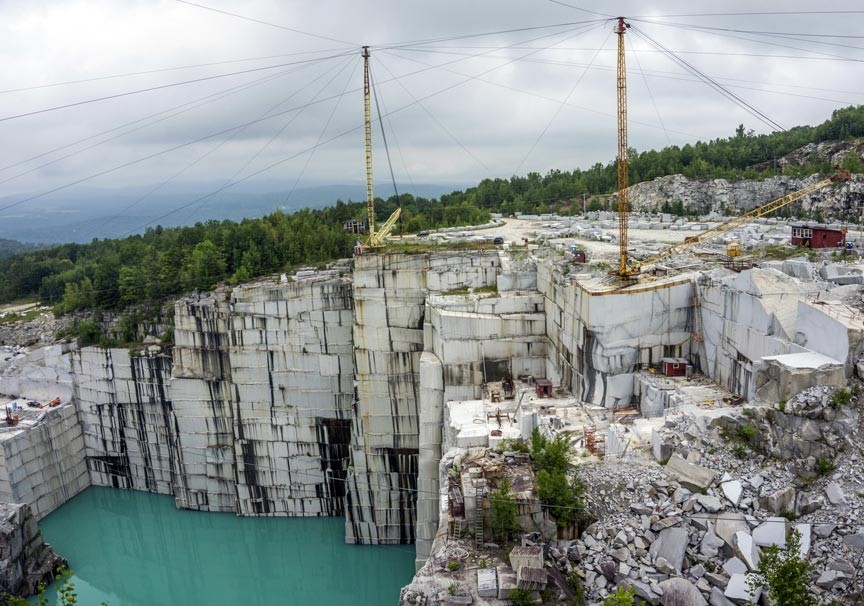Introducing the Mysteries of Granite Quarrying: Where Stamina and Sophistication Meet
The world of granite quarrying is a realm where the raw toughness of nature converges with human creativity to develop structures that stand the examination of time with an air of elegance. From the depths of quarries to the meticulous polishing in workshops, the procedure of changing granite right into building wonders is an intricate dancing of practice and innovation. As we peer into the depths of this old craft, we start to reveal the hidden complexities that shape the extremely essence of our developed setting.
The Origins of Granite Quarrying
In the record of architectural history, the beginnings of granite quarrying are shrouded in a tapestry of old workmanship and geological wonders. Dating back to ancient Egypt and Mesopotamia, the extraction of granite from quarries noted the start of a journey that would at some point result in the production of several of the world's most renowned structures.
Granite quarrying's roots can be mapped to the skilled artisans that identified the rock's toughness and aesthetic appeal. With a mix of primitive tools and sheer decision, these very early quarry employees discovered granite blocks that would certainly come to be the building blocks of civilizations.
As civilizations evolved, so did the strategies of quarrying granite. The Romans, renowned for their engineering expertise, developed sophisticated techniques for extracting granite to construct monoliths, holy places, and roadways that stood the test of time.
The legacy of these old quarrying methods remains to shape modern-day style, with granite staying a sign of stamina and elegance in construction projects around the world. (granite quarries in south africa)
Tools of the Quarrying Trade
The evolution of granite quarrying techniques from old human beings to contemporary times highlights the essential function played by the tools of the quarrying profession in forming the market's practices. In old times, quarrying devices were fundamental, typically containing knives, hammers, and wedges made from materials like bronze or iron. These tools required substantial manpower and time to extract granite obstructs from quarries.

Additionally, the introduction of pneumatic tools and high-powered machinery has considerably minimized the physical labor needed in quarrying procedures, boosting employee safety and productivity. As the quarrying industry remains to innovate, the devices of the profession continue to be at the center of driving progression and forming the future of granite removal.
Drawing Out Blocks of Granite
Using precision find this machinery and progressed methods, the extraction of granite blocks from quarries has become a sophisticated process in the modern-day quarrying sector. The first action entails recognizing the area and size of the granite deposit to identify the most reliable removal technique. When an ideal website is chosen, the extraction process begins with the boring of holes for the positioning of dynamites. Controlled blowing up methods are then employed to disintegrate the granite into manageable areas.

Polishing and Finishing Strategies
To attain a remarkable surface on granite blocks, experienced craftsmens utilize a series of meticulous sprucing up and completing techniques. After the first extraction and forming procedures, the granite obstructs undergo a comprehensive sprucing up phase to enhance their all-natural charm and resilience. One usual method made use you can check here of in polishing granite is ruby abrasion, where industrial diamonds are made use of to grind and polish the rock to a smooth finish. This process not just produces a glossy surface yet likewise makes certain uniformity in shade and texture throughout the granite block.
Along with sprucing up, finishing methods are put on further fine-tune the granite's look. These strategies may include flaming, honing, or brushing, each offering one-of-a-kind textures and finishes to fit various visual choices. Flaming, for example, includes subjecting the granite surface area to high temperature levels to create a rough, textured surface, ideal for outside applications where slip-resistance is crucial. Honing, on the other hand, offers a matte surface that is smooth to the touch, best for interior kitchen counters and flooring. By thoroughly choosing and applying these polishing and completing methods, craftsmens can transform raw granite blocks right into exquisite pieces that showcase both toughness and beauty.

Ecological Effect and Sustainability
With the expanding emphasis on environmental awareness in the sector, granite quarrying techniques are increasingly inspected for their influence on all-natural resources and long-lasting sustainability. Furthermore, the transport of granite from quarries to refining facilities generates carbon discharges, additionally adding to ecological destruction.
To mitigate these impacts and guarantee sustainability in granite quarrying, market stakeholders are embracing numerous actions. Implementing advanced innovations to lower energy consumption and water usage, reclaiming quarried land for ecological remediation, and promoting responsible sourcing practices are some techniques being utilized. Qualifications such as the Woodland Stewardship Council (FSC) and the Management in Energy and Environmental Design (LEED) help consumers recognize eco pleasant granite products.
Conclusion
To conclude, granite quarrying is a procedure that needs specialized tools and techniques to remove blocks of granite and polish them to a high degree of surface. While the environmental effect of quarrying can be significant, initiatives are being made to enhance sustainability techniques in the market. Overall, granite quarrying is a fragile balance in between taking advantage of the strength and style of this natural rock while reducing its influence on the atmosphere.
Comments on “Diving right into of Granite Quarries in South Africa”